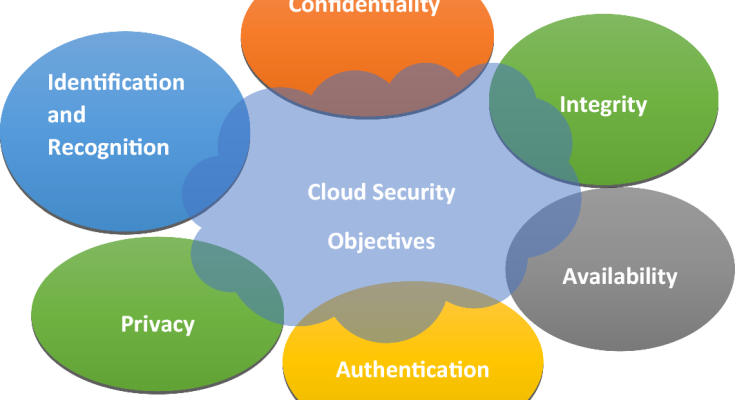Nowadays, data threats are increasing, making it essential for every business, whether large or small, to rely on cloud services. The cloud supports companies in their growth, encourages teamwork, and safeguards their important information. But as more organizations shift to the cloud, keeping data safe becomes a big concern. As cyber threats get cleverer and the number of data breaches climbs, traditional methods of verifying identity just aren’t enough anymore. This is where Adaptive Authentication comes into play. This blog looks at adaptive authentication to boost data security in cloud infrastructure. We’ll discuss more on how it works, its advantages for organizations, and its vital role in businesses moving to the cloud.
What is Adaptive Authentication (AA)?
Adaptive Authentication is a smart way to keep your data safe. It changes how it verifies if someone should be able to access your information depending on various situations. Instead of just using passwords or PINs, it looks at several factors to see how risky the login is and to determine what kind of proof is required to enter cloud resources.
For example, most people access certain applications with familiar devices and locations. Keeping these details to track, if someone tries to log in from a different device or a new location the system steps up security requesting users for more verification. For this technique, Adaptive Authentication uses machine learning, users’ history, and their current data, it will help to make quick, and reliable decisions for users’ data. This approach helps to have a safe and seamless experience also protecting their valuable data.
Why is Adaptive Authentication Crucial for Cloud Infrastructure?
The cloud is a fantastic tool that helps you grow, save money, and access your data easily. However, it does bring some fresh security challenges that need our attention. A report from the Cloud Security Alliance in 2023 found that 65% of companies see cloud infrastructure as the main target for cyberattacks. As cybercriminals get better at taking advantage of weaknesses in cloud systems, we see tactics such as social engineering, phishing scams, and credential stuffing becoming more common. Here’s why adaptive authentication is essential for enhanced data security in cloud infrastructure:
⇒Join us on Telegram for more Sure and Accurate football-winning tips every day...click here
1. Protection Against Credential Theft and Phishing
Hackers can easily break into cloud systems by taking users’ login credentials. A 2022 report from Verizon found that over 80% of hacking incidents involve stolen logins. A simple method to address this issue is to use adaptive authentication to enhance the security. Adding authentication methods with login credentials will help majorly to stop unauthorized access by intruders from getting , even if they have stolen data.
2. Seamless User Experience
A big problem with old security methods is that they can annoy users, causing them to leave. Adaptive authentication largely helps fix this issue by using rigorous security checks requested only when they are needed. This way, we can easily avoid unnecessary barriers for real users. This allows organizations to provide a smooth experience while still keeping strong security.
3. Real-Time Risk Assessment
Adaptive authentication figures out how safe each login is by considering where the user is, what device they are on, what time they are trying to log in, and how they normally act. For instance, if a worker usually logs in from a specific office and at set times, any attempt to log in from a different place or at odd hours will lead to extra security checks. This way of judging risk right away helps stop unauthorized access in cloud settings.
4. Scalability
As businesses grow and start using multiple cloud services, keeping data safe can become complicated. That’s where adaptive authentication comes in. It delivers strong security for various cloud platforms, users, and devices. By providing tailored authentication methods for each user type, it makes sure that security measures fit the sensitivity of the data and the user’s position in the organization.
5. Compliance with Industry Regulations
As regulations tighten, companies need to follow data protection laws like GDPR, HIPAA, and PCI-DSS. Adaptive authentication helps businesses put in place the necessary security steps to meet these rules and safeguard important customer and organizational information.
How Does Adaptive Authentication Work?
Adaptive authentication brings together various technologies and approaches to create a flexible and intuitive authentication experience. Usually, the process involves these steps:
1. Contextual Data Collection
It is when a user tries to access any data in the cloud system; adaptive authentication checks several factors, such as
• Location: The user’s location from the place they are trying to access tracked by the IP address.
• Device: The user’s computer, phone, or tablet model or IMEI used to access.
• Time: This tracks the specific time of day or week when the users mostly login.
• Network: The network of the device such as a home network, a public Wi-Fi, or a VPN that is being connected to.
• Behaviour Patterns: This is tracked by the users’ habits, such as how often they log in, their login timings and their average typing speed.
2. Risk Assessment
When a user attempts to log in, it tracks risks using the information it has gathered from past access attempts. For example:
• Low-risk is when a user accesses from the device or the location they have used in the past, matching their history of usage.
• However, if the same user or intruder attempts to log in from another device or a new location, the system views it as dangerous.
3. Authentication Decision
The system evaluates the risks and determines how to authenticate users based on that assessment. Here’s how it works:
• For simple cases: Users can access their accounts with single sign-on (SSO) or just by entering their username and password.
• For moderate cases: When the system detects some risk, it might ask for an extra verification step, like a one-time password sent to their registered phone.
• For complex cases: If there is more risk, users might need to do a little extra to prove their identity. This could mean answering security questions, giving biometric details, or opting for multi-factor authentication.
4. Continuous Monitoring and Re-authentication
Adaptive authentication doesn’t stop at the first login. It watches how users behave while they are logged in. If anything seems unusual—like attempting to access private information or modifying account settings—the system might require the user to log in again to keep things safe.
Key Features of Adaptive Authentication
Let’s explore some of the key features that make adaptive authentication an essential tool for enhancing data security in cloud environments:
1. Multi-Factor Authentication (MFA)
Multi-Factor Authentication (MFA) helps keep user accounts safer by requesting different ways of identification. The methods may consist of passwords, one-time codes, or biometric. Adding this extra step makes it much harder for someone who shouldn’t be in the account to get in. So, even if a person gets hold of a user’s password, they still have to go through the verification steps to access the account.
2. Behavioral Analytics
Looking at behavior means carefully observing what people do and how their habits change over time. This study aims to identify the typical patterns of behavior unique to each person. In instances where deviations from these established norms are identified, there is the possibility that enhanced security protocols will be initiated. For instance, if a user who typically accesses their account from a specific device attempts to log in from an alternative device, it is likely that the system will require additional verification measures to safeguard the account against unauthorized access.
3. Device and Browser Fingerprinting
Device fingerprinting serves to identify various devices by examining attributes such as hardware identifiers and browser configurations. When an individual attempts to log in using an unrecognized device, the system will require an alternative method of identity verification.
4. Risk Scoring
When a user logs in, adaptive authentication figures out how much verification they need by checking risk scores for that login attempt. It evaluates a variety of factors and assigns scores based on the level of risk. If the score turns out to be too high, the user might need to take additional steps to confirm their identity.
5. Cloud Integration
Adaptive authentication fits well with cloud systems, no matter if they’re public, private, or a mix of the two. It works with many different cloud services, apps, and platforms, helping to keep security steady across the whole cloud environment.
Real-World Examples of Adaptive Authentication in Action
1. Financial Institutions
Cybercriminals frequently target banks, so protecting customer information is vital. Smart ways of identity verification systems are primarily accepted by online banking, banks and fintech companies. For example, to log in to any of these applications, the user must go through authentication factors, but the system checks their history of usage by tracking device details, usage timings, location etc. If the user tries to login with the same tracking details, they are let to use applications easily. Whereas if the history of usage does not match the current login details, then the user is requested for extra authentications to confirm their identity.
2. E-Commerce Platforms
From small to big E-commerce platforms find it tedious to keep the transactions made to be safe. It gets difficult as intruders not only attack the e-commerce platforms but also customers’ payment modes. To resolve these issues, adaptive authentications are used. Adaptive authentications tracks the risks that might be involved for each login and payment purchase attempt made. Customers must go through an additional check before huge payments made. This approach protects customer information and helps stop fraud.
3. Healthcare Providers
Healthcare organizations must follow strict rules, like HIPAA, to protect patient information. Adaptive authentication helps them make sure that only the right people can see private medical data. For example, when healthcare workers need to access patient records and use restricted medicines and equipment, they need to confirm their identity with a biometric.
Best Practices for Implementing Adaptive Authentication
1. Understand Your User Base: The authentication process can be dynamically adaptive as per the users’ requirement, their access level, roles and responsibilities.
2. Combine Multiple Factors: Using multiple factors or a combination of a few, such as location, device, and behavioral analytics, to assess risk.
3. Provide User Education: Guide and familiarize users with the process of adaptive authentication, such as biometrics or MFA.
4. Regularly Review Policies: Monitoring regularly the company policies with adapting authentication to stay ahead and prepared for threats.
5. Ensure Compliance: Ensure that your adaptive authentication methods comply with relevant regulations like GDPR, HIPAA, and PCI-DSS.
Conclusion
As cloud computing grows, keeping sensitive data safe is increasingly important. Cyber threats are evolving rapidly, so companies must look for smarter and more adaptable methods to safeguard their systems. One useful approach is adaptive authentication. This method helps secure cloud resources by assessing the situation and level of risk, making sure that only authorized individuals can access sensitive information.
This method adds extra security but doesn’t disrupt the user experience, allowing companies to protect their cloud data while still following industry rules. Looking ahead to 2025, more and more organizations will likely turn to adaptive authentication, helping them create safe, strong, and user-friendly cloud spaces.




